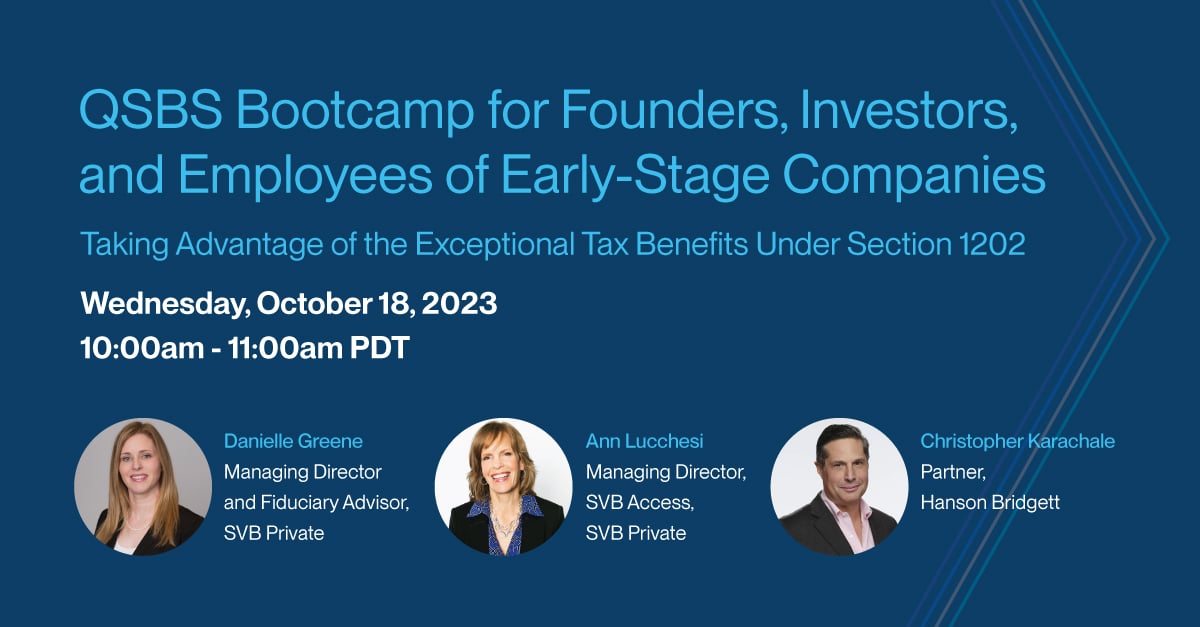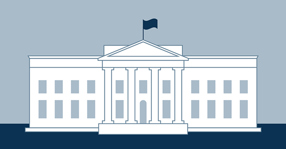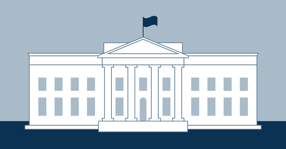We’re pleased to provide you with insights like these from Boston Private. Boston Private is now an SVB company. Together we’re well positioned to offer you the service, understanding, guidance and solutions to help you discover opportunities and build wealth – now and in the future.
Small and medium-sized business owners required to provide temporary paid leave
A part of the Washington Policy series
Overview
In a second act of bipartisanship, Republicans and Democrats in Washington put their election-year politics aside and passed a stimulus package called Families First Coronavirus Response Act or the Families First Act. Effective April 1, 2020 and extends to December 31, 2020. The key provisions of the new law include:
-
Free Coronavirus medical testing and emergency room care.
-
Paid family medical leave and sick leave for most workers in business with fewer than 500 employees who are affected by the pandemic, including those who are stricken, in quarantine, caring for stricken family members, and those who have children in schools or day-care centers that have closed.
-
Federal tax credits for employers for the full cost of providing paid family medical and sick leave.
Treasury Secretary Mnuchin called this legislation the second inning, the first inning starting with the passage of the $8.3 billion Coronavirus spending bill signed by President Trump on March 6, 2020.
The “third inning” to use Secretary Mnuchin’s analogy includes a broad-based economic stimulus bill under discussion in Congress as of this writing and is patterned after the $800 billion American Recovery and Reinvestment Act of 2008 championed by President Obama. The cornerstone of this bill is $500 billion of direct cash payments to Americans, and aid to the hardest-hit industries, starting April 6, 2020. Also, the Treasury Department is asking for Congressional authority to guarantee money market funds because of large investor redemptions. This legislation is shaping up to be the largest rescue package in our history and is likely to top $1 trillion. We expect this legislation to pass Congress in April.
Shannon Saccocia, CIO of SVB Private shares the following perspective, these efforts come on top of Federal Reserve actions which came out of a surprise meeting over the weekend. Following the meeting, Fed Chairman Jerome Powell announced several measures designed to meet some of the challenges presented to the capital markets by coronavirus concerns. More specifically, the Fed lowered the federal funds rate to the effective lower bound of 0-0.25%, and announced several programs designed to loosen financial conditions for both households and businesses. A surprise interest rate cut of 100 basis points came quickly after the 50 basis point cut announced 10 days ago, and was approved by the majority of the FOMC members. In addition to announcing the cut, the Fed's statement indicated that rates were likely to be low for an extended period, or at least until "realized and expected" conditions indicated stability in prices and employment. The most significant component of the additional actions was a newly introduced bond purchase program; purchases of up to $500 billion in Treasuries and $200 million in agency mortgage-backed securities are slated to begin immediately. The desired effects of these measures is to create greater liquidity, particularly in the bond market, which has experienced stress over the last several days amidst significant volatility.
Additional details of the families first act
Please note, in the spirit of providing timely updates to you, this summary represents a quick review of the legislation. We will provide additional details as they come available.
Effective April 1, 2020, businesses with fewer than 500 employees are required to provide 2 weeks of job-protected paid leave for workers (who have been employed for at least 30 calendar days) in quarantine or stricken, those caring for stricken family members and those who have children whose schools or day-care centers have closed. Employers are required to pay an additional 10 weeks of leave at two-thirds pay for workers who have lost their child care because of school and day-care closures.
The amount of paid leave depends on the worker's situation. Payments to workers tested or treated for coronavirus or are told to stay home because of exposure or symptoms diagnosed would be capped at $511 a day which translates into someone making about $133,000 annually. Workers with family members affected by coronavirus and those whose children's schools have closed would still receive up to two-thirds of their pay capped at $200 a day.
Employers with 25 or more employees will have the same obligation as under current family medical leave laws to return any employee who has taken leave pursuant to Families First Act to the same or equivalent position upon the return to work. Employers with fewer than 25 employees are generally excluded from this requirement if the employee’s position no longer exists following leave due to an economic downtown or other circumstances caused by a public health emergency during the application of the new law. The new law does not require employers to pay sick time benefits under the new law in addition to whatever paid sick time or paid time off the employer already provides to its employees as along as existing plan meets the requirements of the new law. Employers may not require that an employee use any other paid time program offered by the employer before using the sick leave required under the new law.
The Department of Labor is directed to issue regulations exempting businesses with fewer than 50 employees if the viability of the business is jeopardized. Employers are required to give employees notice of the new benefit. The Department of Labor is directed to issue a model notice that you can use.
Full reimbursement for the cost of paid leave through a federal tax credit against the employer’s portion of payroll taxes. If payroll taxes are insufficient to fully reimburse the employer for paid leave, the federal government will pay the difference through an additional tax refund.
Increased funding of state unemployment trust funds.
Guaranteed free coronavirus testing and covers the cost of emergency-room visits and physician fees. Medicare and Medicaid cost-sharing for these costs are waived.
Boost to Medicaid funding for more vulnerable populations.
This legislation is treated as emergency legislation, meaning Congress does not need to come up with ways to pay for it. It’s also worth noting the Treasury Department extended the tax filing deadline on as much as $1 million in taxes owed for 90 days on account of the Coronavirus.
Compliance with the new law
as a business owner here are the few ways you may be impacted by this legislation.
-
Claiming Your Payroll Tax Credits. Like most tax provisions, maximizing your tax reimbursement for paid leave requires upfront planning. Immediate review of pending wage and payroll tax payments to employees on leave and those you anticipate will claim paid leave is important. Payments under the new law begin on April 1, 2020. Thus, you will need to begin claiming your payroll tax credits beginning with your second quarter payroll filings. To ensure a smooth process it is important to contact your payroll department and payroll now provider now to plan for both required payments to employees and claiming your tax credits.
-
Workplace Policies. The new law may have state wage and hour implications. Furthermore, the new law is likely to require updating your employee handbook and/code of conduct and employee communications. Furthermore, you may want to review your existing paid leave program to see if it complies with the new law to avoid double payments.
-
Department of Labor Guidance. Keep an eye out for the Department of Labor's guidance on how to apply for a “business viability” exemption from the new law. If this is an issue, filing early with the Department of Labor gives you the best chance of success.
-
Impact on benefit plans. The new law may impact your health, retirement, and other benefit programs. For example, expanding paid leave may impact an employee's compensation used to calculate employer and employee contributions to retirement plans like 401(k)s. Also, if the affordability of employer 401(k) contributions becomes an issue, it is important to review the plan amendment and employee notice requirements with your service providers before implementing any changes to avoid fiduciary and compliance issues. The same advice holds if you experience a lay-off of more than 20% of your retirement plan participants which may trigger accelerated vesting for those plan participants Also, the new law may require amendments to your health plans. Overall contacting your benefits providers about the potential impact of the new law is a good first step.
Key Reminder
Brian Lopez, Managing Director of Retirement Services at SVB Private, would remind those participating in their company 401(k), at times like this, you might be asking yourself; “Should I stop contributing to my 401(k)?” Keep contributing. Your future self will thank you. It is difficult to see your account balance drop. Painful at times.
But it is worth recalling Buffett's strategy during the crash of 2008. “A simple rule dictates my buying: Be fearful when others are greedy, and be greedy when others are fearful. And most certainly, fear is now widespread, gripping even seasoned investors.”
We will keep you updated on the federal government’s response to the coronavirus. If you have any questions or want to discuss how this may impact you, please do not hesitate to contact your SVB Private representative.

SVB Private is pleased to announce a partnership with Doug Fisher, a Washington Policy expert, who will offer a series of insights into a number of reform proposals making their way through Congress. Doug provides strategic insight into the political and policy developments in Washington which impact the wealth management business. Advising wealth management clients on business, tax, and retirement issues, he helps firms and their clients understand the legislative and regulatory landscape and how to maximize business opportunities.
Doug served as tax counsel to the U.S. Senate Finance Committee and led the development of the Roth IRA, Simple retirement plan, the health savings account, and the 529 college savings plan. He co-authored the Small Business Jobs Protection Act, the Balanced Budget Act of 1997 and the Health Insurance Portability and Accountability Act.
After serving on the Senate Finance Committee, Doug led Fidelity Investments’ federal government relations and public policy teams. During that time, he focused on financial services, tax, retirement, and health care policy impacting Fidelity and its clients.














